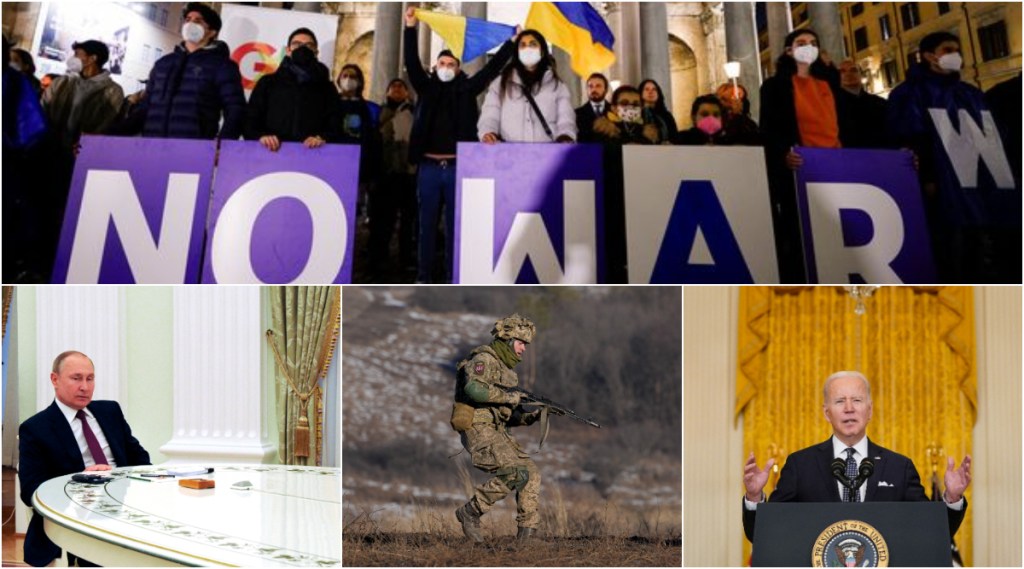By Syed Ali
After the Crimean crisis of 2014, I served as a development professional in Ukraine under a UN affiliate program. International development work is largely holding together the civic infrastructure of a state in conflict rather than serving on the border unless part of the peacekeeping operations. My job was working with the lyceums (schools) in the Eastern Ukrainian city of Kryviy Rih; known for Lakshmi Mittal’s steel factory and peculiarly inhabited on either side of a 126 km road cutting across the city. Incomprehensible infrastructure projects were part of cryptic soviet planning which could have only revealed their intended purpose had the union lasted for a century through the dot-com revolution truly integrating itself into the global economy.
Russia has had an intimate relationship with Ukraine prior to the formation of the Soviet Union dating back to Ottoman times. The Russo-Turkish War of 1768–1774, resulted in the invasion of Crimea by Catherine the great usurping it from the throes of the Khan of the Crimean Tatars and making it part of the Russian empire until 1954. Later Soviet leader Nikita Khrushchev gifted the Crimean Peninsula to Ukraine. The Crimean region is known for its bucolic beauty and has been a popular vacation destination amongst Ukrainians because of its mountains and Tartar cuisine. However, besides the landscape, the peninsula is a geostrategic location opening into the black sea, a crucial spot from the perspective of security. Therefore, Russia invaded the region on the pretext of a referendum not recognized by the United Nations declaring the region as an independent republic. The illegitimate territorial cessation within Ukraine has unfortunately transformed the region into the battleground for settling scores between the Global superpowers exacerbated by its own internal turmoil on linguistics and ethnic lines between the Eastern and Western Ukraine.
Language and Ethnic identity have been at the bottom of the turmoil in the region post-breakup of the Soviet Union. Ukraine is physically split between its eastern and the western region by the Dnipro River cutting across the country beginning from the city of Chernobyl in the north and in south ending at the major port city of Odessa on the banks of the Black Sea. The eastern side of Ukraine and Dnipro has a higher concentration of the Russian-speaking population including the region of Donetsk and Luhansk claiming self-determination alongside Crimea. The Eastern side of Ukraine has 4 of the 5 biggest cities including Kharkiv, the second biggest city of Ukraine which is predominantly Russian-speaking. Oblast or states in Eastern Ukraine besides being Russian speaking are also more industrialized with a higher average income as compared to west Ukraine.
Ukraine has a high unemployment rate of 10% with a 12% population between the ages of 10-24. Lack of economic opportunities and high aspirations among the large young population with no job opportunities along with a complex bureaucracy creates the rife ground for a revolution. Therefore, when former President Viktor Yanukovych shunned a closer engagement with the EU through the European Union–Ukraine Association Agreement, and instead choose closer ties to Russia and the Eurasian Economic Union the nation broke down into protests in Euro Maidan square in Kyiv as a convention center for youngsters demanding closer ties to the EU and a distaste for a closer relationship with Russia. Consequently, the Euromaidan protests led to preemptive action by Russia and the annexation of Crimea. Russian anxiety about European influence and American presence in the neighborhood is compounded by the fact that most former soviet colonies are now willing or part of the NATO alliance. Therefore, it is crucial for the Russian security apparatus to have buffer states in a state of armed conflict.
The estranged relationship between Russia and Ukraine is mired into the generational divide within Ukraine where two generations have experienced separate regimes: the Soviet Union and post-soviet Ukraine. This has dented deep fissures within the social landscape of the country where a generation 30 years ago had experienced free healthcare, ration distribution, and education system to modern-day Ukraine which is without the freebies and without the soviet pride. This was very evident with my experience with teachers and senior school administration who joined lyceum (schools) under the soviet system and now are being pushed into a third system desired by a younger population wanting to integrate with the European integration plan. The older generation is not comfortable, especially women who experienced more affirmative action to join the workforce due to the lack of men after the second world war under the former Soviet regime.
Joining the EU offers more opportunities for a younger population feeling threatened by the prospects of their livelihoods and the independence of their nation. Accession to the EU grants Ukrainian citizens the right to seek overseas employment and connects them to the global economy in addition to other first-nation services. Moreover, Millennials in Ukraine feel an affinity with European culture. Ukraine is a regular participant in the Eurovision concerts since 2013 and has won twice including the 2016 post euro maidan protests, a major symbolic victory legitimizing the people’s call to join the EU. The divide and multiple fissures in the Ukrainian society and economy fueled by global narrative and fear-mongering from an eventual take over by Putin’s Russia creates a fear psychosis amongst the Ukrainian youth. A stark contrast between European liberalism and Russian superiority proliferated by violent conflict, economic mismanagement, and rising unemployment, stealing the future of Ukraine and the pride its young citizens ought to bear in their nationhood.
(The author is an independent analyst expressing his views on International Affairs and Sustainability. He tweets @Alinyst Views expressed are personal and do not reflect the official position or policy of Financial Express Online. Reproducing this content without permission is prohibited).

